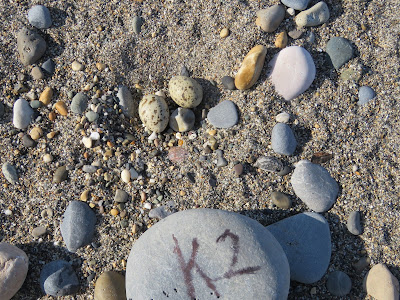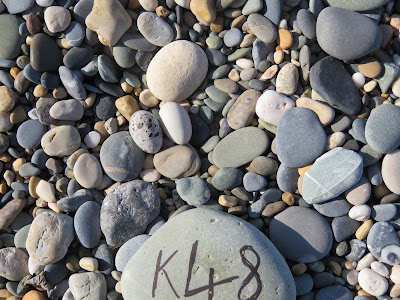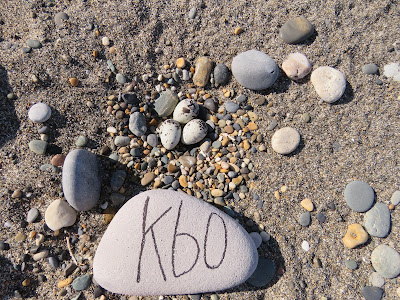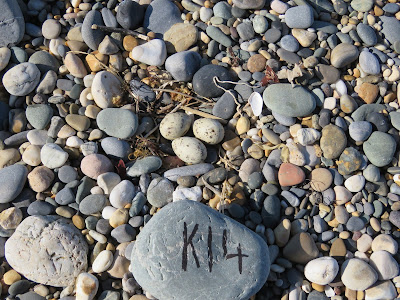Today we want to introduce you to some of our breeding pairs
of Little Terns and their nests. Each pair will lay between one and three eggs
over the course of four days, which they incubate for around 25 days. They won’t
start this properly until the last egg is laid. Usually eggs are laid in a small hole or ‘scrape’ which their parents have dug out with their legs. Often a pair will have made several of these scrapes, and then decide which they will move into. They can be seen early in the season walking together from one scrape to the next, quite clearly house hunting.
Like many seabirds, Little Terns don’t put much effort into their
nest. They lay their eggs straight onto the beach, either on sand or shingle.
 |
| A nest in shingle Taken under NPWS licence (P Manley) |
 |
| A nest on sand Taken under NPWS licence (P Manley) |
This may seem careless but Tern eggs are perfectly camouflaged to blend into
their surroundings, so they are very difficult for predators (or Wardens!) to
find. Their camouflage is so good that adults will occasionally end up incubating a pebble by mistake!
 |
| Accidental rock adoption... Taken under NPWS licence (P Manley) |
One of our pairs this year has laid a very strange egg. It is white all over and has no markings or speckles. Most eggs are either brown or grey and are covered in mottles. It will be interesting to see what happens!
 |
| A completely white egg, very unusual Taken under NPWS licence (P Manley) |
One peculiar habit of some Little Terns is that they will
ornament their nests. They decorate their scrapes, usually by carrying in pale
coloured pebbles and surrounding their eggs with them. Sometimes they will also
drag in nearby twigs or seaweed.
 |
| A nest decorated with pebbles Taken under NPWS licence (P Manley) |
 |
| A nest decorated with twigs and grass Taken under NPWS licence (P Manley) |
The colony is doing well, with 68 chicks and 231 eggs still
left to hatch! June is the perfect time of year to come and see them. We are
always around to answer any questions you have.
 |
| Welcome to the world! Taken under NPWS licence (P Manley) |
- Paddy and Em
